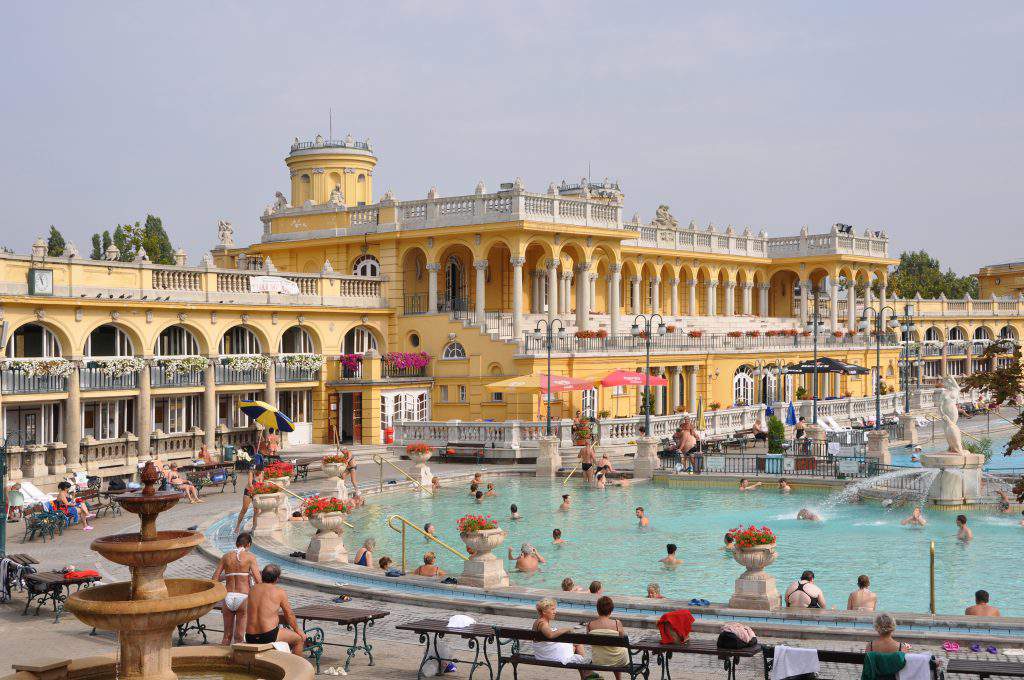5 interesting facts about the Széchenyi bath

Did you know that the hippo in the Pest Zoo receives the water for its pool from Széchenyi Bath’s thermal water? It is just one of the many interesting facts magyarorszagkul.nlcafe.hu reveals about Széchenyi Bath!
The first and biggest
Széchenyi Thermal Bath and Swimming Pool, also known as “Szecska”, is
not only the biggest bathing complex in Budapest, but in whole Europe.
14 years after its opening ceremony, by the August of 1927, the expansion of its common bath was done and a swimming pool was established. It was the first swimming pool on the Pest side. The expansion came to reality on an area 6900 square meters big. Thanks to the continuous developments, at the moment there are 21 pools for visitors to choose from.

Artesian Bath
Vilmos Zsigmondy, the famous mining engineer of the age, after a previous examination figured out that an artesian well in Budapest could be drilled most possibly in the Városliget. His concept was accepted on a general meeting on the 4th of March in 1868. The place for the drilling of the well was appointed: the part in front of the equestrian statue of Árpád on present day Hősök tere (Heroes Square). The drilling started in the November of 1868 and was finished in January, 1878. The building of the bath called Artesian Bath at the time was started in 1909 based on the plans of Győző Czigler, and it was opened on the 13th of June, 1913, under the name of Széchenyi Bath.
Soviet soldiers to the right, everyone else to the left
Turnover was increasing from the opening until the war, until 1944. During the Second World War the building was damaged. Reparation works started almost right after the war and it was ready for use in March. The separated parts were utilised in a way that Soviet soldiers were using the bathtubs on the right, the one on the left and the one for women was also open for the public.
Water motifs
Széchenyi Bath is also called a “Bath Palace”, because the architecture on the inside is subordinated by the bathing culture and the use of motifs connected to water got an important role on the inside just as much as on the outside of the building. Water monsters, shells, fishes, mermaids can be found in the candelabras and the outside decorations of the building. These elements were used on the capitals, the ornamental vessels and the tiles as well. Inside you might feel like finding yourself in an enchanted water realm.

Medical water for drinking and sinking
The first artesian well, providing water for the bath, was drilled by Vilmos Zsigmondy between 1868 and 1878, the water gushing out of the 970 m deep well was 74.5 Celsius degrees hot. The second well was drilled with the leading of Ferenc Pávai Vajna: from the 1240 m deep well the hottest thermal water in Europe gushed out: 77°C.
The medicinal water is recommended for those suffering from joint diseases, chronic arthritis and it can be used as a completion for after-cure of accidents and orthopedic problems.
There is also a drinking hall in the bath, where one can drink water suitable for treating different internal medical problems. So people can cure themselves on the inside and the outside at the same time.
+1 the hippo baths in thermal water too
The hippo in the Budapest Zoo and Botanical Garden gets its water from one of the springs used by Széchenyi Bath as well, since its chemical composition is similar to that of the Nile.
Featured Image: Wikicommony by Pierre Bona
Source: http://magyarorszagkul.nlcafe.hu





